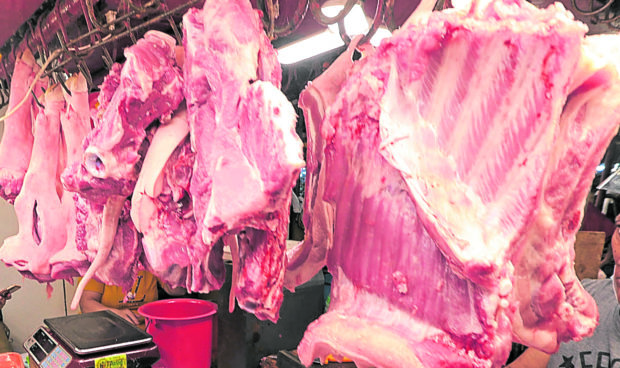The lingering scourge of African swine fever (ASF) combined with the deluge of frozen pork imports dissuaded many hog raisers from increasing their production, eventually pulling down the output of the entire agriculture sector in the second quarter this year by 1.5 percent.
Through June, the total output of the crucial agriculture sector shrank by 2.5 percent, according to the Philippine Statistics Authority.
This makes it even more difficult for the Department of Agriculture (DA) to meet its 2021 growth target for the sector of 2 percent, which is already a downgrade from the original goal of a 2.5-percent growth. In the first quarter, the sector’s output contracted by a more hefty 3.3 percent.
At current prices, the country’s agriculture output was valued at P503.3 billion. At constant prices —wherein changes in inflation are factored in—the value was pegged at P492.4 billion.
Except for farmers, other agricultural players such as livestock and poultry raisers and fishers sustained production declines during the first half of the year.
While the crops sub-sector grew by 3.2 percent during the period, livestock contracted by 21.4 percent, poultry by 2.6 percent, and fisheries by 0.5 percent.
Several factors are at play, but industry leaders have been pointing out that overflowing imports plus increasing costs have discouraged several players from amping up production. For the second quarter, livestock production, which accounted for 14.2 percent of the overall agricultural output, declined by 19.3 percent. The biggest slump was recorded in hogs at 26.2 percent followed by dairy at 6.6 percent, as most hog raisers continued to reel from ASF and were unable to compete with imports.
Other animals
To cope, some have switched to raising other animals such as cattle, carabao and goat, where double-digit increases were noted. Others turned to poultry where production increased by 2.5 percent. Production growth was observed in ducks at 38.4 percent, chicken eggs at 13.1 percent, and duck eggs at 1.8 percent. Chicken production, however, slid by 1.6 percent.
Fisheries output also dropped by 1.1 percent in the second quarter as double-digit contractions were noted in several fish species like yellowfin tuna, roundscad (galunggong), threadfin bream (bisugo), frigate tuna (tulingan) and Bali sardinella (tamban). Lower outputs were also registered for Indian mackerel (alumahan), tiger prawn (sugpo) and seaweed.
Several fishers who were scheduled to sail out to sea were hampered by the recent typhoons. This was reflected in the lower volume of fish that arrived at the country’s ports.
As for crops, production grew by 3.1 percent. Uptrends were recorded for staple crops such as palay and corn, while double-digit increases were noted in sugarcane, potato, onion and cabbage. Improvements in output were also recorded in other crops like cacao, rubber, pineapple, tomato, ampalaya, eggplant, banana, coconut and sweet potato.
Despite the mostly gloomy figures, Agriculture Secretary William Dar said during the agency’s anniversary early this month that the DA has already “made strong and hopeful steps forward” after two years of “grinding labor and sacrifice.” INQ
